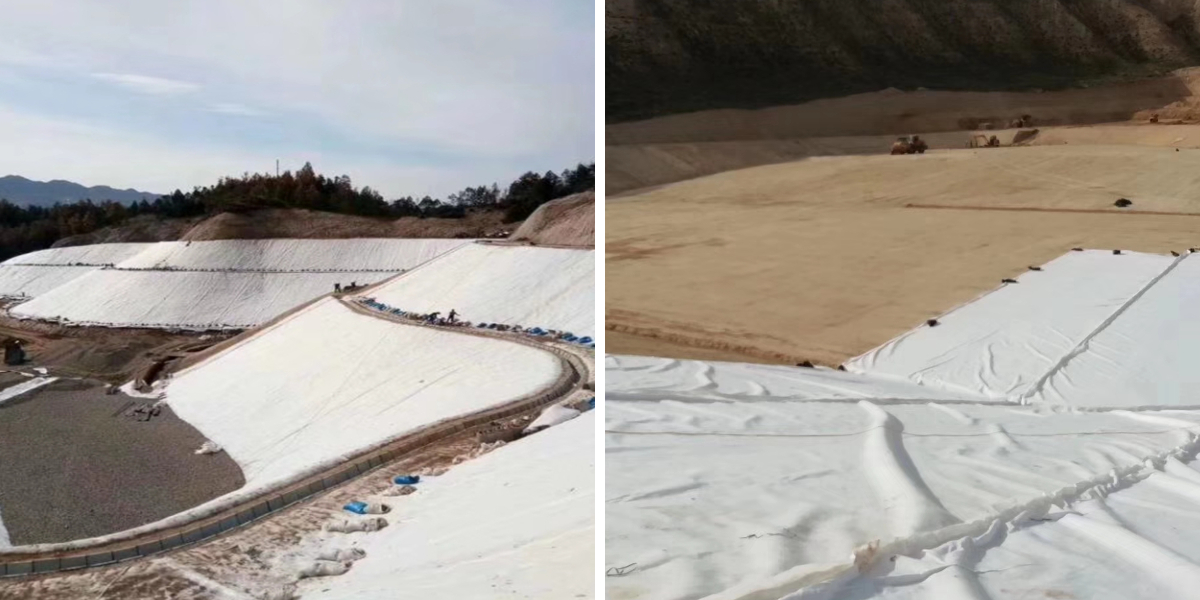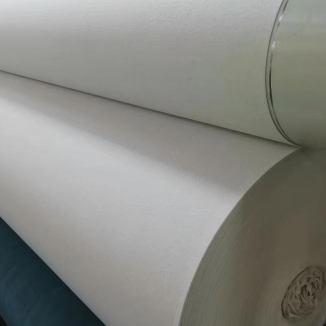Using Geotextiles for Drainage Systems: How They Improve Water Flow
When it comes to managing water go with the flow in construction, agriculture, or landscaping, drainage constructions are the unsung heroes. But even the best-designed buildings can fail barring the appropriate materials. Enter geotextiles—a game-changing reply that enhances drainage efficiency, prevents clogs, and extends the lifespan of water administration setups. In this guide, we’ll find out how the use of geotextiles, which consists of geotextile cloth and geotech fabric, transforms drainage buildings and why they’re a must-have for any project.
What Are Geotextiles, and Why Do They Matter for Drainage?
Geotextiles are permeable material designed to filter, separate, reinforce, and drain water in a wide variety applications. Made from synthetic elements like polypropylene or polyester, these textiles are engineered to deal with heavy loads, face up to degradation, and allow water to skip by means of by way of even as blockading soil, debris, and sediment.
In drainage systems, geotextiles play a critical role: they cease the soil from clogging pipes, gravel, or exceptional drainage components, making positive consistent water flow. Without them, soil particles can seep into the system, inflicting blockages that decrease effectivity or even lead to excessive priced repairs. Whether you’re placing in a French drain, a subsurface drainage network, or a panorama drainage system, incorporating geotextile material or geotech cloth is key to long-term success.
How Geotextiles Improve Water Flow: The Science Behind It
The magic of geotextiles lies in their exclusive structure. Unlike standard components like burlap or plastic sheeting, geotextile cloth is designed with unique pore sizes that strike a balance between filtration and permeability. Here’s how they work to elevate water flow:
Filtration: Geotextiles act as a barrier, trapping soil particles at the same time as enabling water to bypass through. This prevents the drainage medium (like gravel or sand) from turning into saturated with sediment, which would in any different case slow or end water flow. Over time, this filtration continues the computer clear, making certain water strikes freely.
Separation: In many drainage setups, one-of-a-kind layers of material (e.g., soil, gravel, and pipes) prefer to stay separate to characteristic properly. Geotech fabric acts as a separator, stopping these layers from mixing. For example, it stops soil from seeping into the gravel layer, which would limit the gravel’s capability to channel water. By preserving exceptional layers, geotextiles maintain the system’s structure and efficiency.
Permeability: High-quality geotextiles are designed to be extraordinarily permeable, which capacity water can waft through them quickly. This is vital for drainage systems, the region rapid water action is imperative to give up pooling or flooding. Whether it’s rainwater, groundwater, or irrigation runoff, geotextile fabric ensures water strikes with the aid of the device barring resistance.
Benefits of Using Geotextiles in Drainage Systems
Incorporating geotextiles into drainage constructions offers a range of blessings that make them a wise funding for any project:
Longer Lifespan: By stopping clogs and preserving device structure, geotextiles lengthen the existence of drainage systems. This reduces the choose for trendy repairs or replacements, saving time and money in the prolonged run.
Improved Efficiency: Geotextiles make sure water flows consistently, even in heavy rain or immoderate groundwater conditions. This potential a great deal much less pooling, diminished erosion, and greater regular water management.
Cost-Effectiveness: While geotextiles require an preliminary investment, their manageable to prevent high priced troubles (like clogged pipes or collapsed drainage beds) makes them a affordable choice. They moreover reduce the choose for heavy gear or accepted maintenance, lowering ongoing expenses.
Versatility: Geotextiles work in a vary of drainage applications, from residential French drains to agricultural self-discipline drainage and commercial enterprise constructing projects. Whether you’re the use of geotextile cloth for a small out of doors task or geotech fabric for a large-scale development, they adapt to amazing needs.
Choosing the Right Geotextile for Your Drainage Project
Not all geotextiles are created equal. To maximize water waft and computer performance, it’s critical to pick the ideal form for your special needs. Here are key factors to consider:
Material: Polypropylene geotextiles are lengthy lasting and resistant to chemicals, making them satisfactory for harsh environments. Polyester options grant immoderate energy and are greater best for heavy-load applications.
Weight and Thickness: Heavier geotextiles (measured in ounces per rectangular yard) are greater lengthy lasting and greater for high-traffic or heavy-soil areas. Lighter preferences work excellent for a good deal much less nerve-racking projects, like residential drainage.
Permeability Rating: Look for geotextiles with a immoderate permeability rating (measured in gallons per minute per rectangular foot) to make certain fast water flow. This is in general imperative in areas with heavy rainfall.
Filtration Capacity: The geotextile’s capability to filter soil particles depends upon on its pore size. For fantastic soils, choose a geotextile with smaller pores to cease clogging. For coarser soils, massive pores might also moreover be sufficient.
Whether you determine for woven geotextiles (stronger and greater for separation) or non-woven geotextiles (more permeable and high-quality for filtration), matching the cloth to your project’s needs is critical.
Installing Geotextiles in Drainage Systems: Best Practices
Proper set up is key to making positive geotextiles function as intended. Here’s a step-by-step overview of splendid practices:
Prepare the Site: Clear the neighborhood of debris, rocks, and vegetation. Level the soil to create a effortless base for the drainage system.
Lay the Geotextile: Unroll the geotextile fabric or geotech fabric over the prepared area, making positive it covers the entire drainage zone. Overlap adjoining parts via at least 12 inches to quit soil from seeping through gaps.
Secure the Edges: Use stakes or anchors to impenetrable the geotextile to the ground, in precise in areas inclined to wind or water movement. This prevents transferring that can also desire to compromise the system.
Add Drainage Materials: Layer gravel, sand, or extraordinary drainage media over the geotextile. This creates a channel for water to go with the flow through, with the geotextile acting as a filter and separator.
Cover and Finish: Once the drainage resources are in place, fold the greater geotextile over the pinnacle to encapsulate the system. Add a layer of soil or mulch to shield the geotextile and combination the region with the surrounding landscape.
By following these steps, you’ll make positive the geotextile points effectively, keeping your drainage machine clear and water flowing smoothly.
Common Applications for Geotextiles in Drainage
Geotextiles are versatile enough to enhance drainage in a huge differ of settings:
Residential Landscaping: From French drains to out of doors swale systems, geotextile fabric prevents soil from clogging gravel and pipes, keeping lawns and gardens dry.
Agriculture: Farmers use geotech cloth in place drainage to do away with more groundwater, improving soil structure and crop yields. They moreover aid manipulate irrigation runoff, decreasing water waste.
Construction: In avenue developing and establishing foundations, geotextiles stop soil erosion and manipulate water flow, making certain impervious constructions and reducing the hazard of flooding.
Sports Fields: Athletic fields rely on drainage buildings with geotextiles to maintain surfaces dry, stopping mud and making certain invulnerable play even after heavy rain.
Conclusion: Elevate Your Drainage System with Geotextiles
When it comes to surroundings pleasant water flow, geotextiles are a game-changer. By filtering sediment, separating materials, and enhancing permeability, geotextile cloth and geotech material make sure drainage buildings feature at their best—reducing clogs, extending lifespans, and saving money. Whether you’re tackling a small residential challenge or a large enterprise development, incorporating geotextiles is a smart wish that will pay off in greater water administration and long-term reliability.
Ready to beautify your drainage system? Start exploring the desirable geotextile for your needs currently and ride the difference in water waft and gadget performance.
Contact Us
Company Name: Shandong Chuangwei New Materials Co., LTD
Contact Person :Jaden Sylvan
Contact Number :+86 19305485668
WhatsApp:+86 19305485668
Enterprise Email: cggeosynthetics@gmail.com
Enterprise Address: Entrepreneurship Park, Dayue District, Tai 'an City,
Shandong Province









